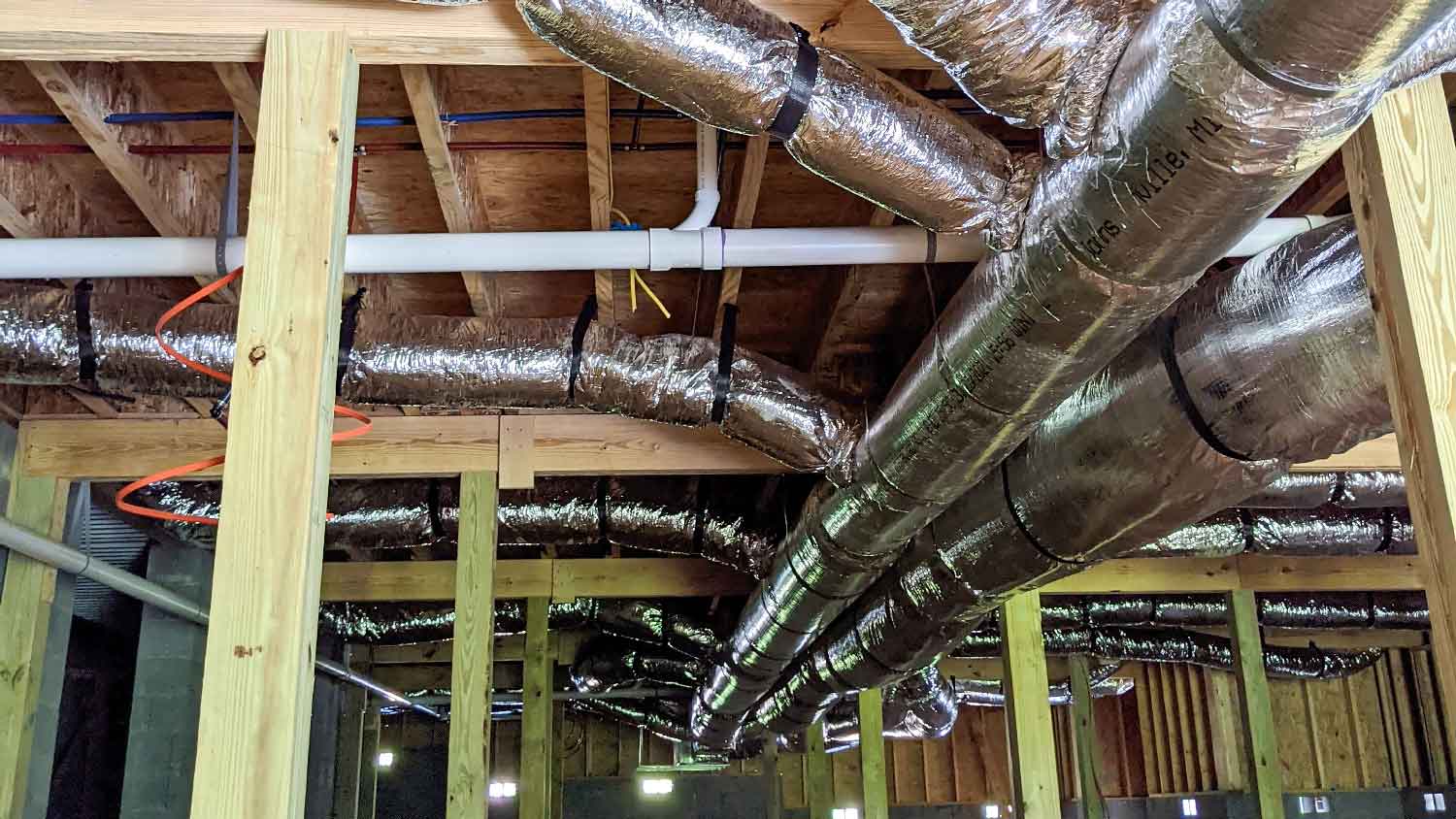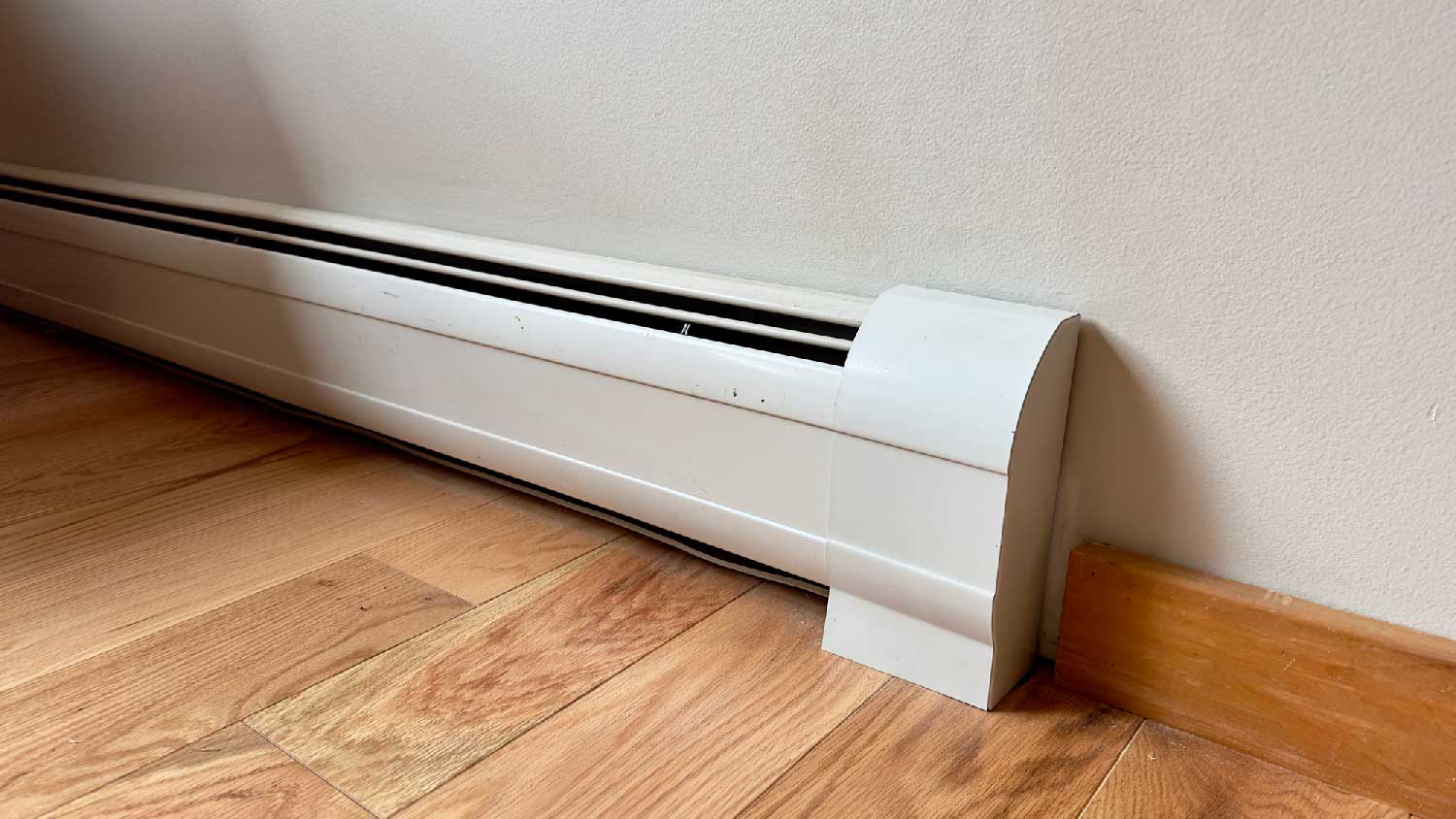
Exposed ductwork can be a smart choice even beyond aesthetics. Fortunately, exposed ductwork costs are relatively low, and easy access keeps repair costs to a minimum.
Keep your furry friends cool during those dog days of summer


When summer arrives, it's no wonder we want to hit the beaches and bask in our backyards. But, as the mercury rises, so does the risk of heatstroke for our pups. Dogs can't regulate their temperatures as well as humans—they rely on panting and sweating through their paw pads—and they overheat more quickly than we do.
Thankfully, your dog can enjoy summer just as much as you do if you’re aware of the risks and take precautions. The tips below will help keep you on the right track.
If you’re heading out with your dog for a quick potty break when temperatures are high, be aware of how hot sidewalks can burn delicate paw pads. Hold the back of your hand against the ground for ten seconds, and if you find it uncomfortable, then so will your dog. Stick to grassy areas or consider using protective balms or dog boots.
If your dog loves nothing more than lounging around in your backyard, ensure there are plenty of shady spots where air circulates freely (a dog house will not provide the relief your dog needs). Tree canopies, tarps, or gazebos are ideal. Keep fresh water available, and always supervise.
On the hottest summer days, you might need to keep your house cool, bring your dog inside, and close the doggy door, so your pup can’t run into the garden as they please without supervision. Keep your AC maintained so you and your pup can enjoy a cool home, and call on a local HVAC repair pro for any repairs—ideally before it gets too hot.

Always carry fresh water and a portable bowl when walking to keep your furry friend hydrated. For dogs that don’t drink a lot, try feeding them wet food or adding unsalted broth to dry kibble. Offering a frozen pupsicle can help cool your dog down and keep their moisture levels up.
There are many cooling products for dogs that provide comfort on hot days. Mats, coats, bandanas, and vests are widely available. Some retain water, and others you can take out of the freezer and put on your dog. Even lying on a damp towel can help to keep your dog cooler.
Freezable dog chews, shallow doggy paddling pools, and sprinklers can also be helpful—especially if your dog is a fan of playing in water. Always supervise your pooch around pools and sprinklers. Some dogs constantly attack sprinklers, so do your best to discourage this type of obsessive behavior.
Regularly using a good de-shedding tool on breeds with a dense, double coat—like German shepherds and huskies—lifts loose hairs and helps them stay cool. For breeds like this, don’t be tempted to shave them. Not only can shaving expose their skin to sunburn, but their coat loses its insulating and cooling properties. Air is held between the topcoat and the undercoat, helping them regulate their temperature more effectively.
Some dogs are more susceptible to overheating, including senior dogs, overweight dogs, and those with a thick coat. Flat-faced, brachycephalic breeds, such as pugs, French bulldogs, and boxers, are also more at risk of heatstroke because they can’t pant as effectively.
Car interiors can reach over 100 degrees Fahrenheit within ten minutes when outside temperatures hit 85 degrees—even with a window left open. The thermometer can read 120 degrees within half an hour, leaving a dog at risk for fatal heatstroke. In some states, it's illegal to leave a dog unattended in a car in hot weather. Even if you only plan to run into the gas station for a minute or two, leave your dog at home when temperatures are 70 degrees or above.
A 2020 study in the journal Animals suggests that heatstroke caused by exercise can be as dangerous as that caused by being left in a hot car. Dogs often still want to play with their ball or run with their friends on hot days, so it's up to you to help keep them cool. Stick with shorter on-leash walks at dawn and dusk to avoid the intense daytime heat. For active, energetic dogs, stock up on brain-train games to keep them stimulated while staying out of the heat.
While preventing heatstroke is easier than treating it, and you’ll want to do everything you can to avoid it, it’s still helpful to recognize the signs.
Your dog may be panting and drooling excessively, breathing loudly, and acting lethargic and uncoordinated. They may have a purple tongue and, in severe cases, may vomit, seize, or fall into unconsciousness.
Move your dog out of the heat immediately and cool their belly, ears, and paws with cool water or ice packs. Don’t try submerging them in very cold water or covering them with a cold, wet blanket. Cooling too quickly can shock the heart and shrink the blood vessels, trapping heat in the body.
Because there’s a fine line between just being too hot and severe heatstroke, seek immediate veterinary support. If your dog has serious symptoms, cooling them while getting them to the vet as quickly as possible can be critical.
From average costs to expert advice, get all the answers you need to get your job done.

Exposed ductwork can be a smart choice even beyond aesthetics. Fortunately, exposed ductwork costs are relatively low, and easy access keeps repair costs to a minimum.

Discover the cost to install ductwork. Learn about average prices, cost factors, and tips to save money on your ductwork installation project.

Find out the average humidifier repair cost, what impacts pricing, and how to save. Get expert tips to budget for your humidifier repair.

Discover the benefits of a DIY outdoor wood furnace forced-air system. Cut costs, reduce fire risk, and embrace renewable heat for your home.

Learn how to reset your boiler safely with our comprehensive guide. Don't let heating issues disrupt your comfort this winter.

Discover the average wall heater installation cost, key price factors, and expert tips to help you budget and save on your next home heating project.